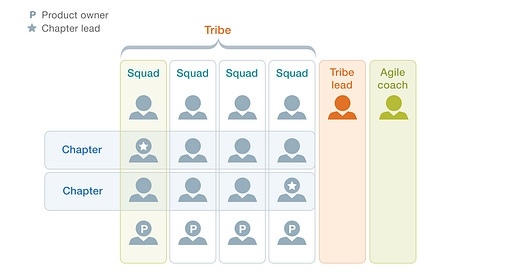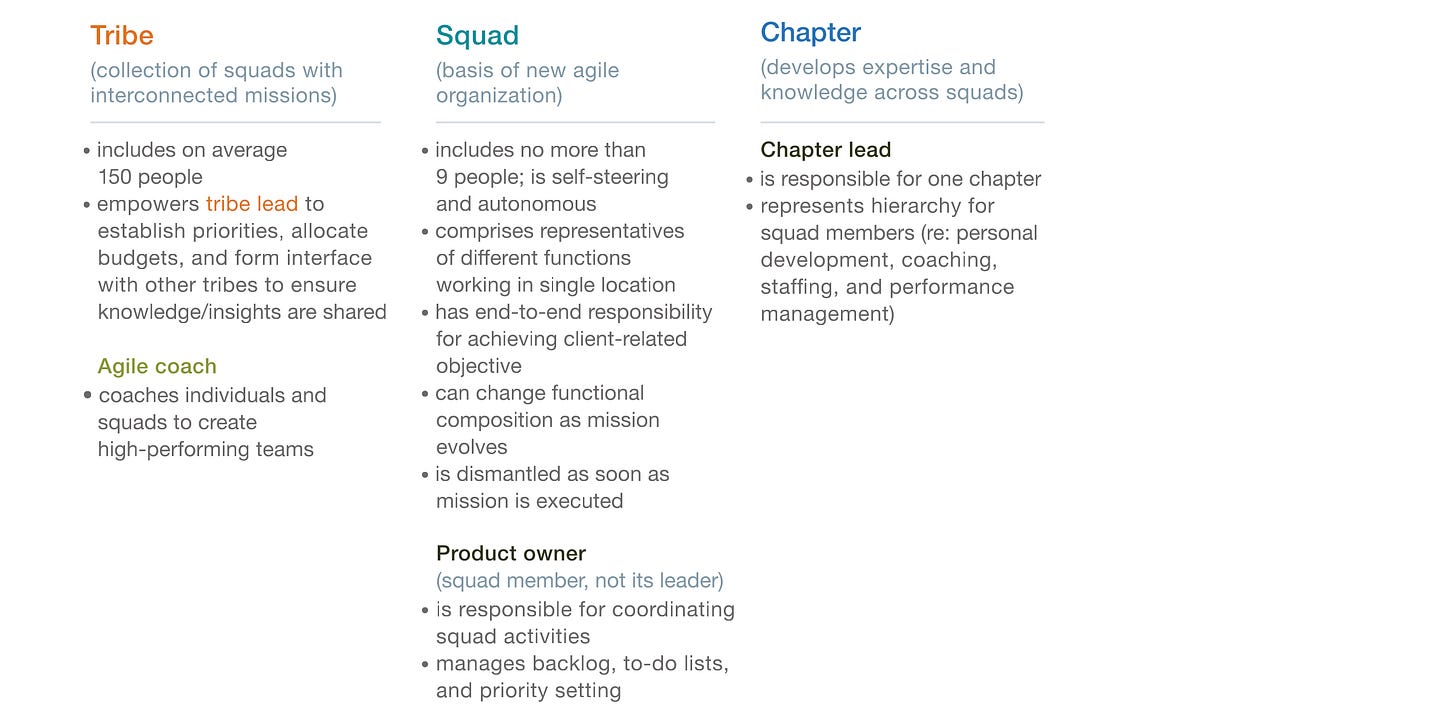How ING Transformed Its Operations Through Agile: A Case Study in Organizational Evolution
Discover the insights and strategies behind ING’s agile transformation, and how it reshaped their banking operations to align with the speed and innovation of tech giants.
The Need for Transformation: A Bank’s Quest to Keep Up With the Digital Age
In 2015, ING, a global banking giant, embarked on an ambitious journey to modernize its operations and better serve its customers in an increasingly digital world. This journey was not driven by financial imperatives; rather, it was spurred by rapidly changing customer expectations, heavily influenced by tech-savvy giants like Google, Netflix, and Spotify. As digital channels became the norm, ING faced the pressing need to adapt its services and internal structures to stay competitive.
“We needed to stop thinking traditionally about product marketing,” explained Bart Schlatmann, then COO of ING Netherlands. “Customer behavior was rapidly changing, and we needed to start understanding customer journeys in this new omnichannel environment.”
This realization led to the introduction of an agile organizational model, aimed at improving speed, flexibility, and customer-centricity. Drawing inspiration from the world of tech, ING made a bold shift to a more flexible, cross-functional model designed to foster innovation and a deeper understanding of customer needs.
Defining Agility: More Than Just a Buzzword
For ING, agility wasn’t just a buzzword—it was the key to success in a world where customer expectations were evolving rapidly. According to Bart Schlatmann, agility is about flexibility and minimizing bureaucracy while empowering teams to take ownership of their work. This wasn’t just about changing the IT department or adopting agile frameworks in isolation—it was a holistic shift across the entire organization.
“We adhere to the ‘end-to-end principle,’” Schlatmann explained. “Our squads are multidisciplinary teams, each with a blend of marketing specialists, product managers, UX designers, data analysts, and IT engineers—all working toward a common definition of success and customer satisfaction.”
These squads, which are self-organizing units within ING’s agile structure, became the backbone of the transformation. They were designed to test, iterate, and deliver customer-centric solutions faster and with more direct impact than traditional, siloed departments.
Four Key Pillars of ING’s Agile Transformation
Looking back on ING’s agile transformation, Peter Jacobs, the Chief Information Officer at ING, identified four major pillars that facilitated the bank’s success:
1. Agile Methodology: This was the foundation of the transformation. By restructuring teams into agile squads, ING broke down silos and fostered greater collaboration across departments. The result? Increased speed and efficiency in delivering customer-centric services.
2. Organizational Structure and Governance: A critical component of ING’s success was redefining roles and governance to eliminate traditional management hierarchies. Without the old reporting lines, ING enabled greater autonomy and decision-making power within its squads, which accelerated delivery and innovation.
3. DevOps and Continuous Delivery: ING introduced DevOps practices to facilitate faster, more frequent software releases. Instead of launching large updates a few times a year, ING aimed for bi-weekly releases—allowing them to be more responsive to market demands.
4. New People Model: Traditional hierarchies, where managers were judged by the size of their teams and projects, were replaced by a focus on knowledge and expertise. ING shifted its performance-management model to prioritize the growth of well-rounded, highly skilled professionals.
The Scope of Transformation: Starting at the Core
The journey began with ING’s headquarters and 3,500 staff members, which included departments such as marketing, product management, and IT development. By focusing on these core teams, ING aimed to set an example for the broader organization. Over time, this agile model was expanded to other parts of the bank, including operations, call centers, and support functions.
“It took about eight or nine months to implement the new organization at headquarters,” said Schlatmann. “We spent the first two months defining the vision, then spent the next few months developing pilot squads and learning from them before moving to full implementation.”
IT: A Gateway to Broader Change
While IT agility wasn’t strictly a prerequisite for the broader transformation, it played a pivotal role in ING’s success. ING had already adopted a more agile IT model, but it was initially limited to IT teams. The broader shift to full organizational agility was a natural progression, and the collaboration between IT and business functions was essential for building a truly agile culture.
Jacobs emphasized that agility within IT allowed ING to develop products faster, but a true transformation required cross-functional collaboration, which ultimately led to better customer solutions.
Cultural Shifts: The Heart of Transformation
Perhaps the most challenging and impactful aspect of ING’s transformation was the cultural change. “Culture is the most important element of this transformation,” said Schlatmann. ING didn’t just want to change its processes—they wanted to shift the mindset and behaviors of its employees.
A significant part of this cultural shift involved rethinking the hiring and onboarding processes. Employees were encouraged to step outside their traditional roles and work in different departments to gain a deeper understanding of the business. ING also adopted a peer-to-peer hiring model inspired by Google, which led to more diverse teams and a more inclusive culture.
Another key initiative was the redesign of ING’s physical office spaces. Walls were torn down to create more open, collaborative environments, reflecting the new, less hierarchical culture. The emphasis was on informal interactions and constant communication—mirroring the collaborative, innovative culture found in tech companies.
The Impact of Agile at ING
ING’s agile transformation has already shown promising results. Time to market has improved, employee engagement has risen, and productivity has increased. The integration of cross-functional squads has empowered employees to take ownership of their work and respond more quickly to customer needs.
But the transformation isn’t just about internal processes. ING’s new agile model has helped position it as the number-one mobile bank in the Netherlands, a testament to the bank’s ability to innovate and adapt to the digital era.
“We realized that, at the end of the day, we are a technology company operating in the financial services space,” said Jacobs. “Our transformation was inspired by some of the most innovative tech companies in the world, and that’s what we’ve tried to implement here at ING.”
Conclusion: Lessons Learned from ING’s Agile Transformation
ING’s agile journey is a powerful example of how established businesses can evolve to meet the demands of the digital age. By embracing flexibility, collaboration, and customer-centricity, ING has positioned itself as a leader in mobile banking and customer experience.
The bank’s transformation offers valuable insights for organizations across industries looking to modernize their operations. Whether you’re in banking, retail, or any other sector, the lessons from ING’s agile transformation can help guide your own journey toward innovation and success.
Subscribe to Our Substack for More Case Studies and Insights on AI, Tech Leadership, and Innovation
If you found this case study insightful, make sure to subscribe to our Substack for upcoming case studies and articles on AI, tech leadership, and organizational transformation. Stay ahead of the curve with strategies and stories from industry leaders driving the future of business and technology.






